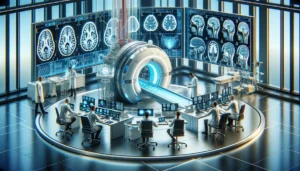Neuroplasticity is a fundamental aspect of brain functionality, showcasing the brain’s incredible ability to adapt, heal, and evolve throughout an individual’s life. This dynamic process underpins learning, memory formation, recovery from brain injuries, and adaptation to new experiences or environmental changes. Neuroplasticity demystifies how the brain reorganizes itself and opens avenues for innovative therapeutic strategies in neurological and psychological conditions.
At the core of neuroplasticity lies the brain’s ability to forge and reconfigure synaptic connections between neurons. Learning a new skill, for instance, triggers the brain to adjust its neural pathways, strengthening connections that support this new knowledge while allowing less-used pathways to weaken or fade. This mechanism is often summarized by the phrase “neurons that fire together, wire together.” Furthermore, this highlights the brain’s capacity to reshape its structure in response to demands.
The implications of neuroplasticity and brain adaptation extend far into recovery from brain injury. Following damage from events such as stroke or traumatic brain injury, the brain embarks on a remarkable journey of self-repair. It can reroute functions previously managed by damaged areas to undamaged regions, a testament to its resilience and adaptability. Rehabilitation therapies leverage this capability, employing targeted exercises to encourage the brain to develop new pathways and regain lost functions.
Neuroplasticity also reveals its presence in the brain’s response to sensory deprivation or enhancement. For example, individuals who lose the use of one sense often experience an enhancement in the abilities of other senses as the brain reallocates resources to make better use of the available sensory information. This adaptability underscores the brain’s resourcefulness in optimizing function regardless of the circumstances.
Furthermore, neuroplasticity plays a critical role in emotional and psychological well-being. Therapeutic approaches like cognitive-behavioral therapy (CBT) exploit the brain’s plastic nature to help individuals reshape negative thought patterns into more positive, adaptive ones. Patients can rewire their brains through repeated practice and engagement in constructive thought processes, fostering healthier thinking patterns and behaviors.
Despite its vast potential, the extent of neuroplasticity and brain adaptation is not limitless. Factors such as age, the severity of brain injury, and the timing of intervention can influence the degree of plastic change achievable. Younger brains exhibit a higher degree of plasticity, yet even in adulthood, the brain retains a significant capacity for adaptation and reorganization.
Scientists at the Picower Institute for Learning and Memory at MIT conducted one notable research study on neuroplasticity. During this study, scientists discovered a fundamental rule of brain plasticity. When one synaptic connection strengthens, immediately neighboring synapses weaken to maintain balance, involving a crucial protein called Arc. This study, which utilized advanced techniques like optogenetics and electron microscopy, provides significant insights into how synaptic strengthening and weakening combine to produce plasticity in the brain. Such findings enhance our understanding of learning, memory, and the potential for therapeutic strategies in neurological diseases.
In conclusion, neuroplasticity embodies the brain’s extraordinary ability to adapt, learn, and recover. It challenges old notions of a static, unchangeable brain, presenting a dynamic organ capable of remarkable transformations. As research in this field unfolds, our understanding of neuroplasticity enriches our knowledge of the brain’s inner workings. It holds promise for enhancing human health and potential through innovative therapeutic approaches. The journey into the depths of neuroplasticity is a testament to the brain’s resilience. In addition, it showcases its capacity to overcome challenges and harness opportunities for growth and healing.
References
Cognitive Behavioral Therapy – https://www.psychologytoday.com/us/basics/cognitive-behavioral-therapy
Rappaport MB, Corbally CJ. Neuroplasticity as a Foundation for Decision-Making in Space. NeuroSci. 2022; 3(3):457-475. https://doi.org/10.3390/neurosci3030033
H.B. Li, W.B. Liang, L. Zhou, The experimental research on neuroplasticity in rats’ hippocampus subjected to chronic cerebral hypoperfusion and interfered by Modified Dioscorea Pills,
Heliyon, Volume 6, Issue 1, 2020,e02897, ISSN 2405-8440, https://doi.org/10.1016/j.heliyon.2019.e02897. (https://www.sciencedirect.com/science/article/pii/S2405844019365569)






